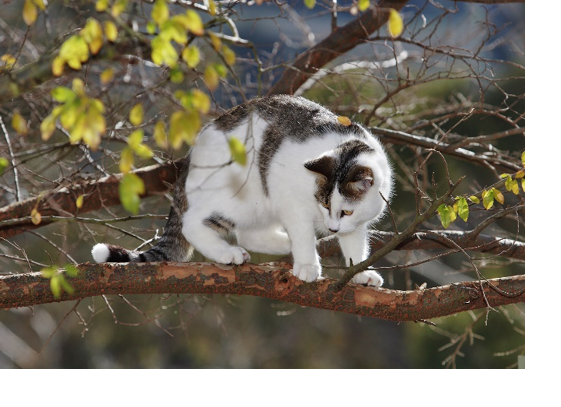LIVING LIFE FREE OF FEAR
Abusive partners prevent you from living your life free of fear. Life feels like a balancing act, one in which you have no control over when and how you’ll get pushed off balance. You must stay vigilant for danger signs and cope the best you can.

If you reach a decision that life can’t go on as it has, there are many paths from which to choose, a few of which are:
- Reading books,
- Talking to a domestic violence advocate or a therapist,
- Reaching out to friends or family,
- Telling partners to get help or you’ll leave,
- Consulting with an attorney about options,
- Calling the police,
- Making a plan to leave safely, or
- Leaving.
Many people view leaving as the only sign that survivors resist abuse, but there are many steps on the continuum of change. All steps are choices for living life free of fear. You know best how far and fast to go. When it comes time for leaving, it needs to be planned carefully because abusive partners often escalate then.
Noticing Rational Fear and Instilled Fears
Starting down a new path is frightening, no matter what it is. You don’t know what you’ll face. A partner’s response can’t be controlled. You may not know what resources are available. Professionals may not understand. You’re terrified you won’t be okay. Many times the hell you know seems preferable to what you don’t know.
Whenever you embark on something new, expect feeling fearful. It often feels like jumping off a cliff. All the insecurities you have (we all have them) jump out to say you won’t make it.
Do not take fear as a sign you’re doing the wrong thing. I like the Buddhist term “monkey mind” that describes automatic fears. It’s important to be able to differentiate these from the truth, the inner voice or intuition you need to listen to and trust. Monkey mind pops up with any new endeavor, whether it’s ending a relationship, starting a job, going to school, marrying, having a baby, or writing a book. The trick is to notice this type of fear but not let it hold power over your choices.
Which brings me to a personal experience. When I was offered a publishing contract for Coercive Relationships: Find the Answers You Seek, fear and doubt popped up in full force. During writing, I checked in with myself several times, asking, “Is this really something you are called to do?” The answer was always “yes,” and I trusted my intuition and plowed ahead. When publishing became reality, the floodgates opened. However, I learned to notice fear but not believe in it or give it power over me.
The author Eckart Tolle says,
“What a liberation to realize that the “voice in my head” is not who I am. Who am I then? The one who sees that.”[i]
The automatic fears and doubts we experience are what Tolle means by “voice in my head.” Your inner voice is who you really are, not the learned fears and insecurities that I call “instilled fears.” These fears began when you were called weak, stupid, incapable, or any number of other lies. You absorb how you are treated and begin to see yourself as less than you are.
Unlocking Fear’s Hold
Whether you ground yourself in who you are through a spiritual or secular practice, it is vital for living life free of fear. Abuse acts to divorce you from yourself. To regain what you think, feel, need, dream of, and want to manifest in your life, you need to trust your perceptions and intuition. Sometimes this means finding yourself for the first time.
Intuition has been downplayed in our culture to our detriment, as Gavin deBecker in The Gift of Fear[ii] indicates. deBecker speaks of the rational and intuitive fears that we’ve often been taught to ignore. The fear that comes from paying attention to something not being right. This is different from the instilled fears talked about above.
Learning to trust yourself involves listening to and following your inner voice and intuition. This includes attending to your perceptions when there is rational fear. The good news is the more you listen to your intuition, the more you will trust it. But starting out is scary. Do not believe in the automatic, monkey mind fears. Use rational fear as an impetus for safety planning. Embrace your identity as a person who can observe both kinds of fear but not allow them to control your life.
Living Life Free of Fear with the White Stone
My spiritual community engages in a white stone ceremony every January. This ritual comes from Roman times when people were given white stones to prove they were citizens. When someone was imprisoned, they took away the stone. When the prisoner was released, they were given the white stone again.
Our ceremony involves listening for a new name, some quality or vision that we want to manifest in the new year. I invite you to find a stone that signifies living life free of fear.

I chose mine after I received the publishing contract. One that encouraged me on my journey of finishing the manuscript for my book.
Congratulate yourself on living life free of fear. Notice rational fear and let it guide your choices. Let go of the instilled fears that threaten to control your life. And be sure to stay loyal to your intuition.
[i] Tolle, Eckhart, A New Earth: Awakening to Your Life’s Purpose, New York: Penguin Books, 2005, 2016.
[ii] deBecker, Gavin, The Gift of Fear: And Other Survival Signals that Protect Us From Violence. New York: Dell Publishing, 1997.

